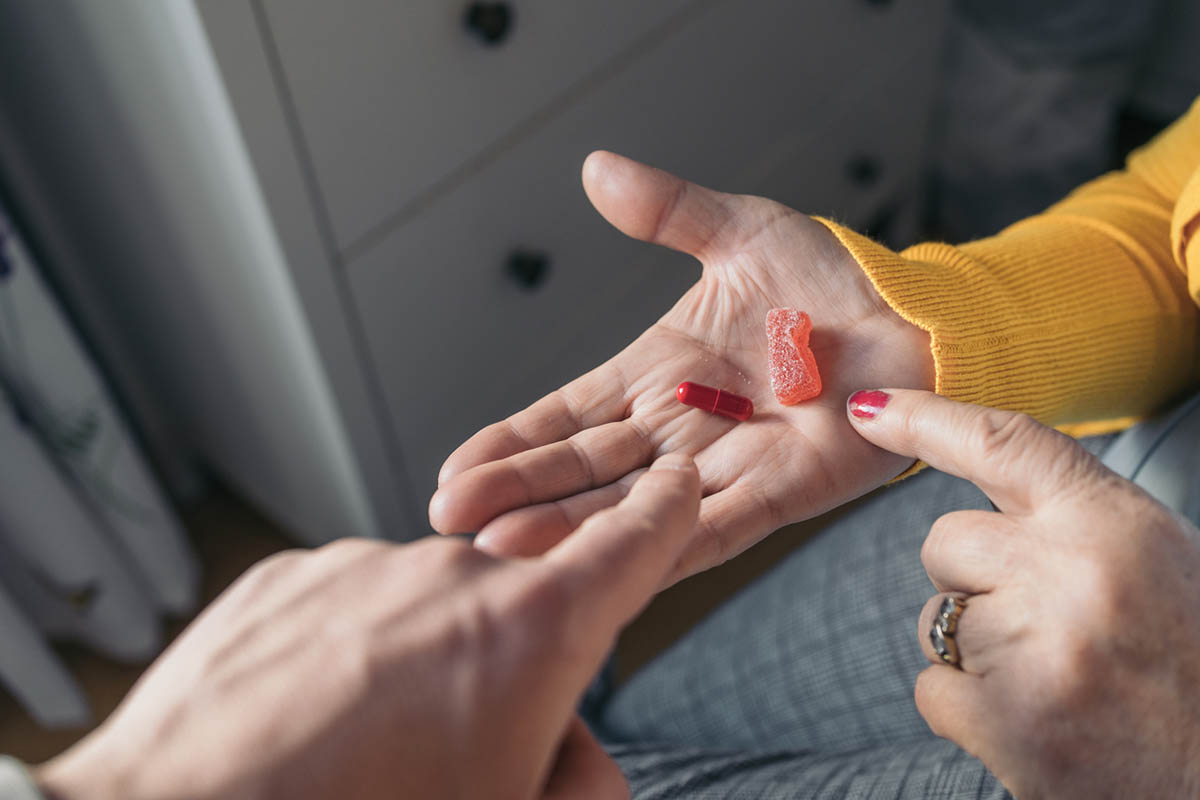A Case of Neurotoxic Syndrome With the Use of Long-Acting Risperidone and Subsequent Olanzapine and Paroxetine
To the Editor: Administration of medications that affect brain dopamine and serotonin neurotransmission are occasionally associated with neurotoxic, behavioral, and autonomic syndromes, variously described as the neuroleptic malignant syndrome (NMS) and the toxic serotonin syndrome.1 We describe such a syndrome with the use of long-acting risperidone and subsequent olanzapine and paroxetine.
Case report. Ms A, a 38-year-old woman, presented to our emergency department in 2009 for difficulty with swallowing and talking and profound drooling of saliva. She had a history of paranoid schizophrenia and amphetamine and heroin dependence and had had a severe head injury 15 months previously for which she underwent temporal craniectomy (with evidence of a right temporal lobe gliosis on follow-up computed tomography scans). For the past year, she was being treated with long-acting risperidone injection 37.5 mg intramuscularly every 2 weeks, lithium carbonate 250 mg bid, and oral risperidone 3 mg, taken at night. She was observed to have extrapyramidal symptoms, which were treated with benztropine. In an attempt to reduce these symptoms, these medications were stopped, and she was prescribed olanzapine 10 mg, taken at night, and paroxetine 20 mg, taken in the morning. Benztropine was continued.
Over the next month, she developed progressive dysphagia, severe sialorrhea, occasional low-grade fever, frequent and profuse sweating, unsteadiness of gait, falls, and progressively slowed movements. Over the course of hospitalization, we observed the following: muscle rigidity (lead-pipe, all 4 extremities), coarse tremors of the hands, tachycardia, labile blood pressure, severe nausea, and tongue fasciculations. She had no cognitive, psychotic, or affective symptoms. There was no evidence of agitation, myoclonus, hyperreflexia, incoordination, shivering, or diarrhea (Sternbach criteria for serotonin syndrome2). Findings of laboratory investigations were all within normal limits except for mildly elevated liver function tests. Serum creatine kinase level was 40 U/L. She met DSM-IV research criteria for NMS (333.92).3 She was treated with benztropine 4 mg/d, and all other medications were stopped. All symptoms resolved within 8 days. Two days prior to discharge, she had paranoid thinking. In light of her history and emerging symptoms, olanzapine 5 mg at night was instituted. There was no reemergence of physical or psychiatric symptoms on follow-up.
This case provides several insights into the symptomatology and pathophysiology of NMS and serotonin syndrome. The patient developed NMS/serotonin syndrome symptoms on treatment with a combination of paroxetine and olanzapine. There were no features of NMS/serotonin syndrome in the preceding months when she was being treated with oral and depot risperidone and lithium carbonate, although she did have significant extrapyramidal symptoms.
The patient met DSM-IV criteria for NMS. However, she did not have the symptoms of severe NMS, such as a marked creatine phosphokinase elevation, hyperthermia, and an altered sensorium. The fact that she was on treatment with an atypical antipsychotic and that her symptoms were detected early probably accounted for this. Several of the patient’s symptoms could also be explained by a serotonin syndrome.1 Nausea, for example, is not a typical feature of NMS but is frequently seen in serotonin syndrome.
Abrupt discontinuation of antipsychotic treatment is a well-recognized although rare predisposing factor for the development of NMS. Although her medications were stopped, the patient was on depot risperidone treatment and would have had therapeutic plasma concentrations for several weeks. Risperidone has high antagonistic D2 receptor affinity, and the institution of olanzapine would have had a similar effect, although olanzapine is a relatively weaker D2 antagonist than risperidone.4 This would have resulted in a hypodopaminergic state, which is one of the postulated mechanisms for the development of NMS.5
Paroxetine is a potent and specific inhibitor of 5-HT reuptake,6 whereas olanzapine has high antagonistic affinity at 5-HT2A receptors and low agonistic affinity at 5-HT1A receptors.4 This would have resulted in significantly increased serotonergic neurotransmission at the 5-HT1A receptor. Hyperstimulation of the 5-HT1A receptor in the brain stem and spinal cord has been implicated in the pathophysiology of both the serotonin syndrome and NMS.7 In addition, there is substantial evidence that the serotonin system inhibits dopaminergic function at the level of the origin of the dopamine system in the midbrain as well as at the terminal dopaminergic fields in the forebrain.8
Furthermore, studies suggest that traumatic brain injury patients show an increase in serotonergic and noradrenergic neurotransmission and a dysfunction in mesolimbic and mesocortical dopaminergic neurotransmission.5,9
The net effect of all these actions in this patient would have been a greatly increased serotonergic neurotransmission and a greatly decreased dopaminergic neurotransmission. This could explain the pathophysiology of the toxidrome in this case and explain the symptom overlap between NMS and serotonin syndrome that this patient displayed.
This case highlights the need for caution and vigilance in the use of selective serotonin reuptake inhibitor-atypical antipsychotic combinations, particularly in patients with preexisting brain injury.
References
1. Fink M. Toxic serotonin syndrome or neuroleptic malignant syndrome? Pharmacopsychiatry. 1996;29(4):159-161. PubMed
2. Sternbach H. The serotonin syndrome. Am J Psychiatry. 1991;148(6):705-713. PubMed
3. American Psychiatric Association. Diagnostic and Statistical Manual of Mental Disorders, Fourth Edition. Washington, DC: American Psychiatric Association; 1994.
4. Bymaster FP, Calligaro DO, Falcone JF, et al. Radioreceptor binding profile of the atypical antipsychotic olanzapine. Neuropsychopharmacology. 1996;14(2):87-96. PubMed doi:10.1016/0893-133X(94)00129-N
5. Sadock BJ, Sadock VA, Ruiz P, eds. Kaplan and Sadock’s Comprehensive Textbook of Psychiatry. 9th ed. Baltimore, MD: Lippincott Williams & Wilkins; 2009.
6. Thomas DR, Nelson DR, Johnson AM. Biochemical effects of the antidepressant paroxetine, a specific 5-hydroxytryptamine uptake inhibitor. Psychopharmacology (Berl). 1987;93(2):193-200. PubMed doi:10.1007/BF00179933
7. Carroll BT. The universal field hypothesis of catatonia and neuroleptic malignant syndrome. CNS Spectr. 2000;5(7):26-33. PubMed
8. Kapur S, Remington G. Serotonin-dopamine interaction and its relevance to schizophrenia. Am J Psychiatry. 1996;153(4):466-476. PubMed
9. Kmieciak-Kołada K, Felińska W, Stachura Z, et al. Concentration of biogenic amines and their metabolites in different parts of brain after experimental cerebral concussion. Pol J Pharmacol Pharm. 1987;39(1):47-53. PubMed
Author affiliation: Department of Emergency Medicine, Psychiatric Emergency Care Centre, Campbelltown Hospital, Campbelltown, Australia.
Potential conflicts of interest: None reported.
Funding/support: None reported.
Published online: July 29, 2010 (doi:10.4088/PCC.09l00925gre).
Prim Care Companion J Clin Psychiatry 2010;12(4):e1
© Copyright 2010 Physicians Postgraduate Press, Inc.




